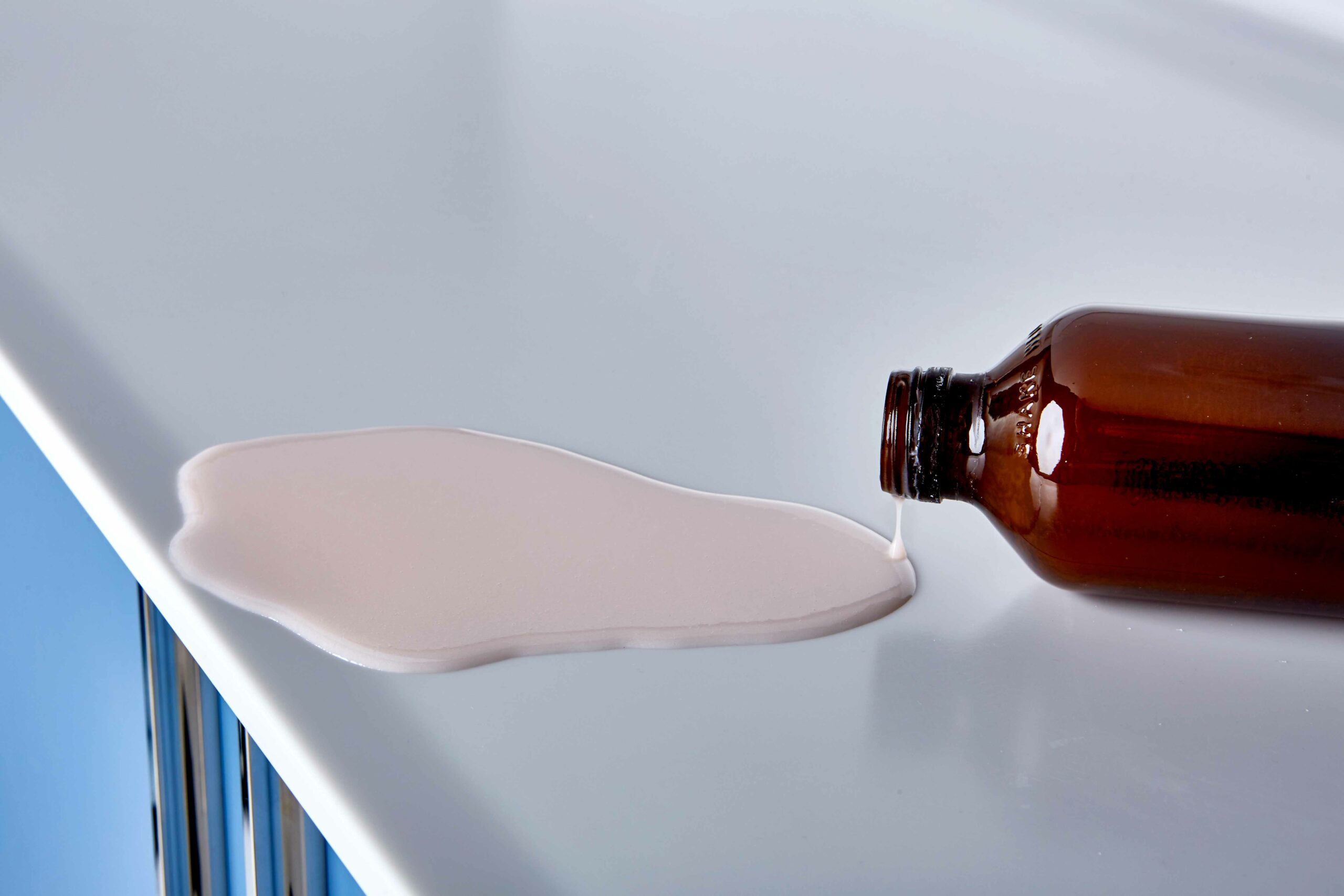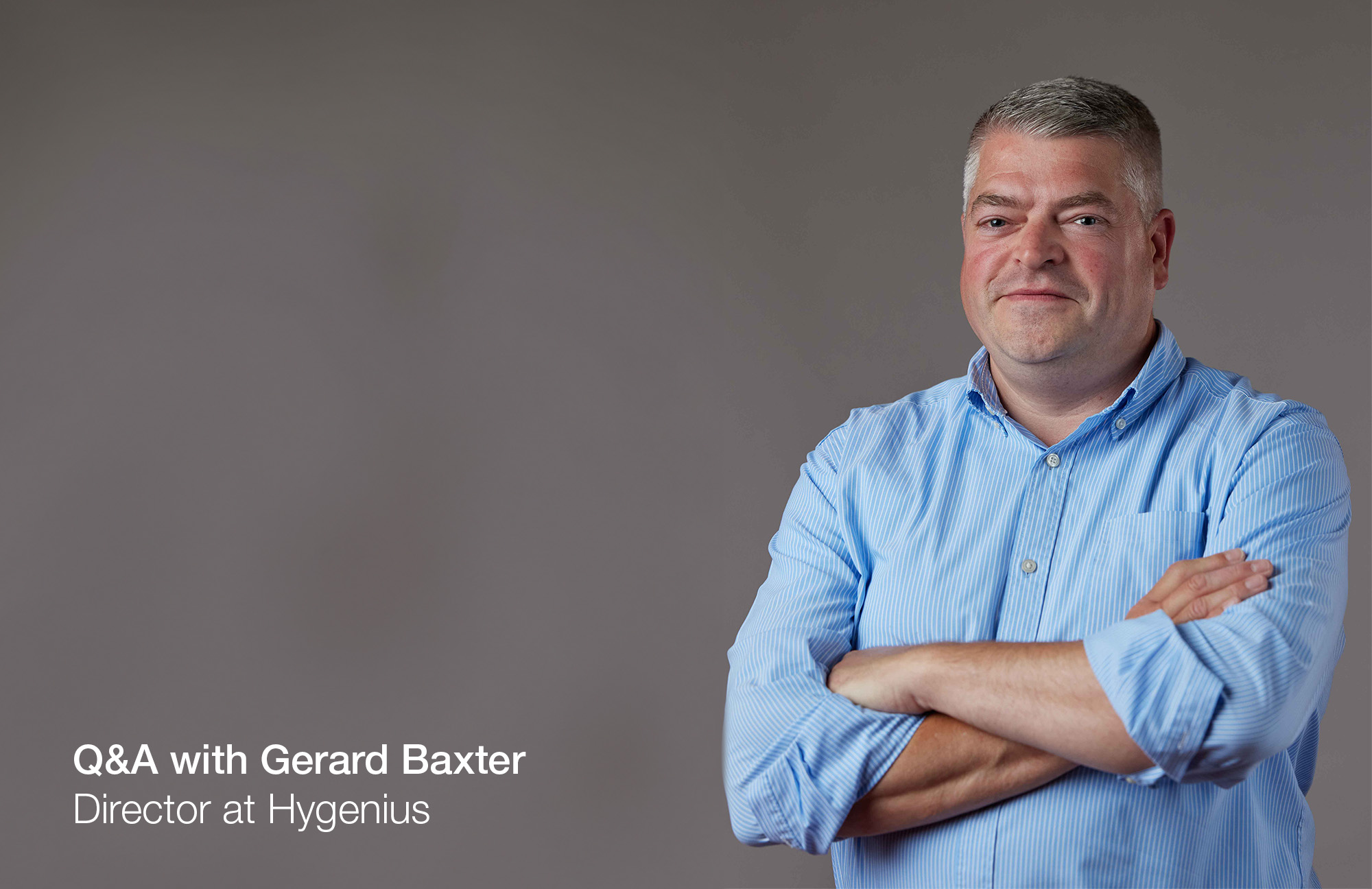We grilled Gerard Baxter, Director at Hygenius, asking him to sum up 25 years of experience in a few paragraphs, so that healthcare managers and specifiers can always be sure they’re choosing the safest and most sustainable healthcare work surfaces. Happily, he had an easy way for us all to remember his advice!
Q: There are work surfaces in almost every healthcare space, whether it’s a reception area or a ward, a nurse station or a theatre, an anaesthetic room or a sluice. Is there a common factor that should guide our choice for all these places?
Yes. Always have two S’s in mind – Safe and Sustainable. By Safe I mean keeping patients safe, so always specify with infection control as the top priority. By Sustainable I mean long life, repairable, re-usable. Don’t pick a cheap material that damages easily and ends up being replaced after a couple of years.
Q: Now how about design? Does the shape or layout of an installation affect those two S’s?
Absolutely – and I’m going to give you two more S’s to remember! Simple and Straight. Corners or complex shapes mean joints – and they mean nooks and crannies for infection. Also, and have a look next time you’re in a hospital, corners don’t get cleaned as well as straight runs– the work surface is deeper in corners and the cleaner has to reach further.
Q: So let’s talk about what a healthcare work surface is made of. There are lots of different materials – how should we work out which to specify?
Can you cope with two more S’s? When specifying healthcare work surfaces materials, always favour Solid and Seamless. By Solid I mean acrylic solid surfaces – Corian is one of the brand names if that helps – solid grade laminates are also a good choice.
Acrylic solid surfaces are very tough, and even if they do get damaged, they can be repaired. They’re also easy to mould, so you can avoid joints completely – your work surface can be Seamless.
Even around corners (if you insist on having some!) a solid work surface, including its upstand and waterfall front edge, will have no dirt-trap seams at all.
Yes, I know acrylic solid surfaces are more expensive than laminated work surface, but laminates don’t qualify for my first two S’s – Safe and Sustainable. Look underneath a laminate work surface and you’ll see MDF – a rough surface that’s hard to clean and harbours dirt.
Also, laminates damage easily and can’t be repaired – so either you put up with the damage and its infection implications, or you invest in another work surface, thus cancelling out your initial saving.
Q: What else is there to think about when specifying healthcare work surfaces, and – I almost hesitate to ask – do you have any more S’s to help us remember?
Services and Sockets!
At the planning stage, work out where your Services are going to run and don’t place them so that someone will have to drill holes in the work surface to poke wires or pipes through! Why? Because holes in work surfaces – whatever the work surface is made of – break the most important S – Safe. Holes are dirt and infection traps. So plan your Services carefully.
Also, when you’re placing power sockets, usb sockets etcetera, don’t put them under the work surface – someone is bound to drill a hole to get their wire through! Don’t inset them in the upstand either – you need this to be smooth and easy to clean. No, place Sockets above the work surface so that users can stay Safe when they reach them and plug in easily.
Q: OK so by my count that’s 8 S’s. Shall we sum up?
Absolutely. First come Safe and Sustainable. Put infection control at the top of your list when specifying healthcare work surfaces, and try not to use anything that won’t stand up to hard knocks and can’t be repaired or reused. Think long term.
Q: Next, as I recall, were Simple and Straight. Avoid corners and complex shapes – they’re harder to clean and, if you choose the wrong work surface material, they require joints and seams – bad for infection control.
Speaking of joints and seams, the next two to remember are Solid and Seamless. Solid work surfaces are expensive, but by far the best choice for safety. Also, a solid acrylic work surface can be moulded in one piece for any layout, so you can be totally Seamless.
Q: And finally, Services and Sockets. Plan your service runs so that no-one will have to drill holes in the work surface for pipes or wires. Also, fit power outlets and usb sockets above the work surface, so that there’s no need for holes and cleaning stays easy.
Safe & Sustainable
Q: Simple & Straight
Solid & Seamless
Q: Services & Sockets
Thanks for reading and always remember the 8 S’s when specifying healthcare work surfaces!
View the solid surface range
Need help with a current healthcare project? See your ideas come to life with colour swatches and samples. Order free acrylic solid surface samples here



